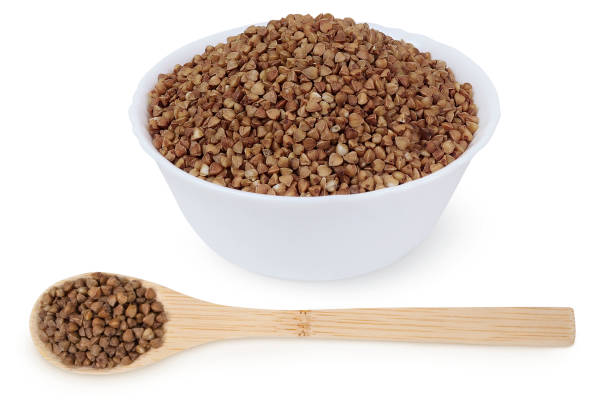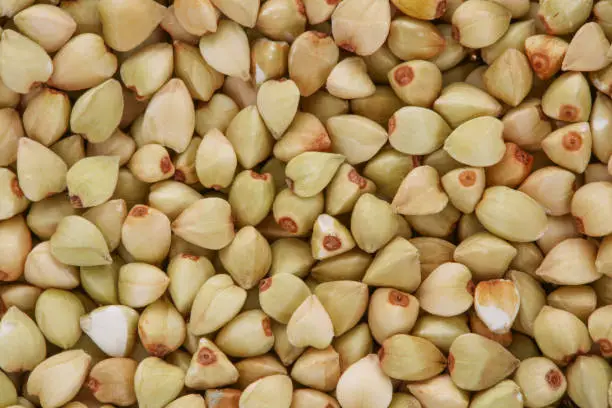Introduction to Buckwheat (कुट्टू) – The Indian Millet
A good amount of fiber and plant compounds with antioxidant qualities can be found in buckwheat, which may help lower blood sugar and promote heart health. Some people may experience allergic reactions to it. Buckwheat is a member of the food group known as pseudocereals. Although they don’t grow on grasses, pseudocereals are seeds that are eaten like cereal grains.
Other popular pseudocereals are amaranth and quinoa. Buckwheat is gluten-free since it is unrelated to wheat, despite its name. It can be made into groats, flour, or noodles, or it can be added to buckwheat tea. Similar to rice, groats are the primary component of many regional cuisines from Asia and Europe. Buckwheat’s high mineral and antioxidant content has made it a popular choice for health-conscious consumers.
Among its advantages might be better blood sugar regulation. The two varieties of buckwheat that are most commonly grown for food are common buckwheat (Fagopyrum esculentum) and tartary buckwheat (Fagopyrum tartaricum). The northern hemisphere is where most buckwheat is harvested, particularly in China, Russia, Kazakhstan, and Central and Eastern Europe.

Nutritional Value
Buckwheat’s primary nutritional component is carbs. There is also protein, a variety of minerals, and antioxidants. Compared to many other grains, buckwheat has a significantly higher nutritional value. For 3.5 ounces (100 grams) of raw buckwheat, the nutrition facts are
The Nutritional Value of Buckwheat as per 100gms is
- Energy: 333 kcal
- Carbohydrate: 62.2 g
- Protein: 13.3 g
- Fat: 2.22 g
- Fiber: 2.2 g
- Iron: 2 mg
- Potassium: 311 mg
- Calcium: 67 mg
Cabs
Carbs make up approximately 20% of the weight of boiled groats, which is the main component of buckwheat (2). They manifest as starch, the main form in which carbohydrates are stored in plants. According to the glycemic index (GI), which gauges how quickly food raises blood sugar after a meal, buckwheat has a low to medium score and shouldn’t result in unhealthful blood sugar spikes.
Some of the soluble carbs in buckwheat, such as fagopyritol and D-chiro-inositol, have been shown to help moderate the rise in blood sugar after meals
Fiber
A fair amount of fiber, which your body is unable to process, is present in buckwheat. This nutrient supports healthy colon function. Boiling groats contain 2.7% weight of fiber, primarily consisting of cellulose and lignin. The husk that covers the groat contains the majority of the fiber. The flavor of the husk is distinct because it is preserved in dark buckwheat flour. The husk also contains resistant starch, which is classified as fiber because it is resistant to digestion.
Protein
There is a small amount of protein in buckwheat. Boiling buckwheat groats contain 3.4% protein by weight. Buckwheat protein has a very high quality due to its well-balanced amino acid profile. The amino acids arginine and lysine are especially abundant in it.
However, due to antinutrients like tannins and protease inhibitors, these proteins’ digestibility is comparatively low. Buckwheat protein has demonstrated efficacy in lowering blood cholesterol, inhibiting the formation of gallstones, and decreasing the risk of colon cancer in animals. Carbs make up most of the content of buckwheat. Additionally, it has a healthy dose of resistant starch and fiber, which may benefit colon health.
Additionally, it provides trace amounts of premium protein.
Minerals and vitamins
Compared to many common cereals, including rice, wheat, and corn, buckwheat has a higher mineral content (5). Buckwheat doesn’t contain a lot of vitamins, though.
Generally speaking, Tartary buckwheat has more nutrients than common buckwheat out of the two main types.

Manganese
Found in whole grains in large quantities, manganese is necessary for a healthy metabolism, growth, development, and antioxidant defenses in your body.
Copper
is a crucial trace element that, when consumed in moderation, may improve heart health but is frequently deficient in the Western diet.
Magnesium
This necessary mineral may reduce your chance of developing several chronic illnesses, including type 2 diabetes and heart disease when consumed in sufficient amounts through diet.
Iron
Deficiency is a major cause of anemia, a disorder in which your blood’s ability to carry oxygen is diminished.
Phosphorus
The development and upkeep of bodily tissues depend on this mineral. Buckwheat is richer in minerals than many other pseudocereals and cereals. It’s high in manganese, copper, and magnesium but low in most vitamins.

Improved blood sugar control
High blood sugar levels have the potential to cause several chronic illnesses, including type 2 diabetes. Therefore, controlling the rise in blood sugar following meals is critical to preserve overall health. Buckwheat is high in dietary fiber and has a low to medium GI. This implies that for the majority of people with type 2 diabetes, eating it should be safe. It is believed that the special compound D-chiro-inositol is the cause of this effect. According to studies, this soluble carb increases a cell’s sensitivity to the hormone insulin, which causes a cell to absorb blood sugar.
Heart health
Additionally, buckwheat may strengthen the heart. It has a lot of heart-healthy ingredients, including fiber, copper, magnesium, rutin, and some proteins. Buckwheat is the highest-quality cereal and pseudocereal in terms of rutin content, an antioxidant that may offer several health advantages (39). Because rutin reduces blood pressure, inflammation, and blood clot formation, it may lower your risk of heart disease. Additionally, it has been discovered that buckwheat enhances blood lipid profiles. One well-known risk factor for heart disease is a poor profile.
OVERVIEW
Buckwheat is a good option for those with type 2 diabetes because it may lower blood sugar levels. Additionally, by lowering blood pressure and improving your blood lipid profile, may improve heart health.

Ayurvedic Benefits of Buckwheat
Balances doshas: According to Ayurveda, buckwheat balances on Kapha dosha by helping with excess heaviness and water retention in the body. It is considered sattvic, meaning it promotes clarity, peace, and balance in the body and mind.


1 thought on “Buckwheat (कुट्टू) – The Indian Millet (3) – The Great Millet”